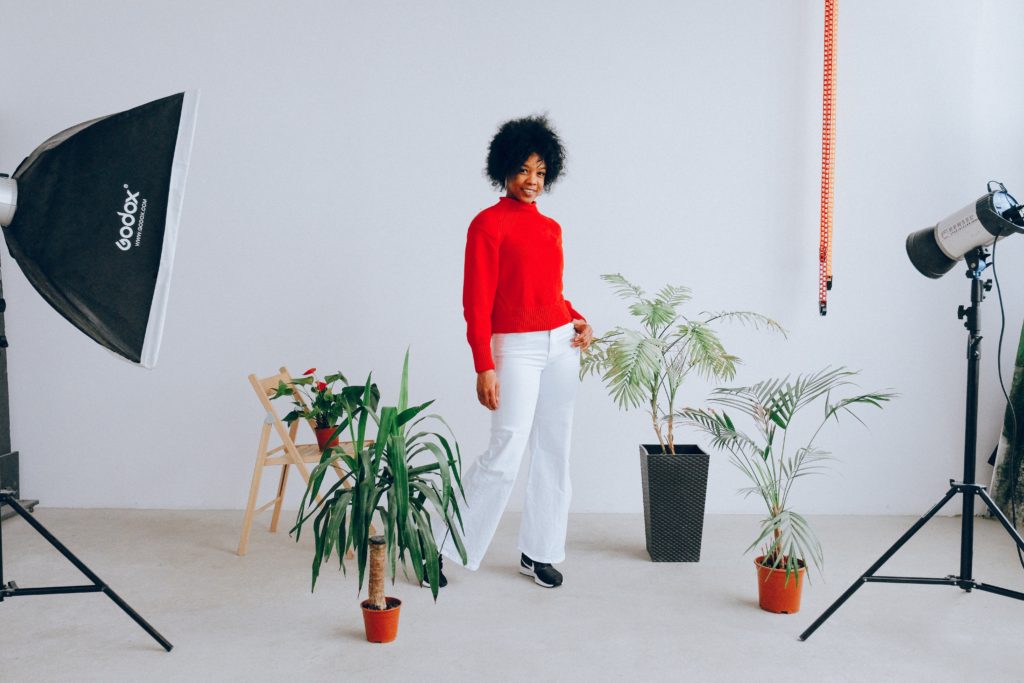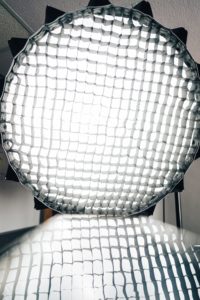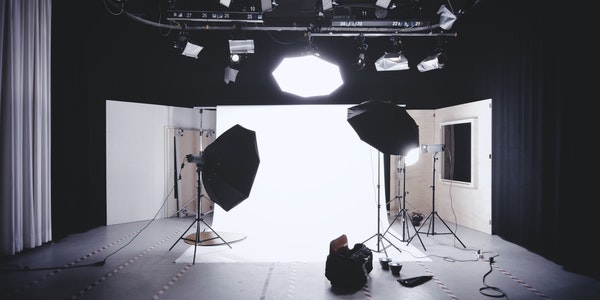Softbox is a housing designed to contain artificial light sources such as flashes, halogen lamps, etc. The reflective interior enhances the light output and projects it through the only escape method-the front diffuser, which creates a light quality that has long been appreciated by photographers and videographers, similar to the softer light one might find flowing through windows. Also softbox creates square or rectangular highlights on the reflective surface of the object. Due to the quality of the light emitted by this type of modifier, the “soft” name is stuck.
Softboxes were made of hard materials (such as plywood) at the early stage, which are different from today’s lightweight materials (such as polyester and nylon). Meanwhile, the philosophy is the same-light is contained because it is diffused through the translucent white panel and reflected inside the housing
Table of Contents
Agility
Although not all softboxes are the same, softboxes are more capable of rendering diffuse light, unless you are using a umbrella with huge size such as 8`. Moreover, you can adjust the degree of diffusion available as needed. This is one of the reasons to consider buying a softbox with a movable front diffuser, which have removable internal baffles to prevent hot spots that is emitted. The front diffusers made by major manufacturers have different strengths, and some even have filter panels that can convert the output to daylight or tungsten balance depending on your source of lighting. No matter what cases, you can also choose not to use any diffusion, which will turn your softbox into a large reflector.
Softbox and reflective umbrella
Let’s briefly discuss the difference between a reflector umbrella and a softbox, because many photographers have put forward many different opinions on the old spare diffuser umbrella.
Reflective umbrellas are very easy to install, there is no doubt that, the mounting holes of these loops can be snapped into place without tension, although softbox manufacturers like ARRI have always come up with quick loops with connecting loops. In addition, there are softboxes from companies like Ledsfilm, which have an umbrella-like function, so we have at least part of the same status here.
Regardless of the size of the softbox and reflector, they can condense and focus the 180-degree beam angle of the light source. When used at the same distance, a larger reflector umbrella will have a larger beam angle than a smaller diffuser umbrella. Therefore, it is very important to match the size of the subject to the size of the object. In any case, the beam angle of the diffuser is about 135 degrees, and it is difficult to accommodate a lot of so-called “overflow light.”
Reflective umbrellas have many advantages, including they can form circular spotlights in the eyes of portrait subjects-rectangular reflections look less natural (unless you want to replicate the light from a window). You can also use a round mask on a rectangular or square softbox, while this is another step in the settings. Again, you can also buy an octagonal softbox, but I will introduce it later.
On the other hand, softboxes do contain lights, and I think it’s hard to question that they are much better than diffusers. Their beam angle is about 90 degrees, and they work right out of the box. Overflowing light is greatly reduced, and it is easier to guide light than a wider diffuser. In actual production, major softbox manufacturers will produce optional honeycomb grids to reduce the beam spread to 50 degrees, 45 degrees or even 10 degrees. This is a real benefit because the grid is a mirror. Provides directional control, has a soft, pleasing light quality and is easy to manage to contrast with open shadows. When you make position adjustments in the scene for light intensity adjustments, you are also unlikely to put a softbox in the lens.
The interior of the reflector and softbox can be gold, white or silver. The advantage of the reflector is that on the switchable reflector, you can replace the interior, and this process is not very simple. On the other hand, the softbox can accept other diffusions inside to create a softer light.
Shape classification of soft box
square
This shape is the favorite of portrait studios and is suitable for most shooting scenes, although full length shooting will be reduced, and the rendering of the spotlight is very similar to a long rectangle. The square softbox is very suitable for low-ceiling shooting spaces, whose shape is very suitable for small groups and head and shoulder portraits.

Rectangle
Most people think of this kind of rectangular softbox when they say “softbox”. The longer side is usually ideal for full-length portraits and vertical composition. Many softboxes have a fixed speed ring that can be rotated, so you can adjust the direction of the frame in landscape mode to get a wider horizontal coverage. The rectangular soft box projects window-like highlights on reflective objects, however, the spotlight it creates in the eyes of portrait subjects is not ideal.
Long strip
The long strip box can also present a pleasing soft light, but it can be better closed and aimed at the target than the standard rectangular, square or octagonal wide sink. The size of the rectangular soft box is approximately 1:1.3 (the ratio of the short side to the long side), and the strip storage area is approximately 1:4, making it very suitable for edge or edge lighting to separate the object from the background and on top The lighting of individuals or groups depends on the size of the softbox. Long strip shape also makes it easy to illuminate the background from above or below, and makes it easier to create “gradient” backgrounds for product shooting. In glassware and other reflective objects, the ribbon-shaped levee creates long and elegant highlights.

Fabric mesh
This is currently the best softbox accessory on the market. When not in use, the fabric grid can be folded flat, and while maintaining soft light quality and manageable contrast, it reduces the spread of the beam. The grid has 20-degree, 30-degree, 40-degree and 60-degree extensions. Directional control and overflow light control can be added to make it very useful. It can be used as a side light or light on a boom just blocked by an umbrella. When the grid is used as the main light source, it can well isolate the subject from the background, thus presenting an elegant painting style.
The size of the soft box
The basis for choosing the size of the softbox is the coverage required by the subject and the quality of light that you are looking for. Generally, unless you use the full portrait effect, you will not use a 54 x 72-inch soft box for shooting, nor a 12 x 16-inch soft box for head shots or small target shots. However, the quality of the light must be considered, which is related to the size. The further away your subject, plus its size relative to the softbox, the mroe difficult and rougher the light source will be. Although it is not a “point light source”, the soft box is closer to this definition than the larger light box, but if you pull back the 54 x 72″ far enough, you can match the 12 x 16″ appearance.
The shape and size of the softbox control the shape of the light projected on the subject. For example, most of the surface area of a large softbox is wasted on the head, but it is ideal for small and medium-sized groups. Among other factors, this is the reason for using softboxes of different sizes and shapes.
